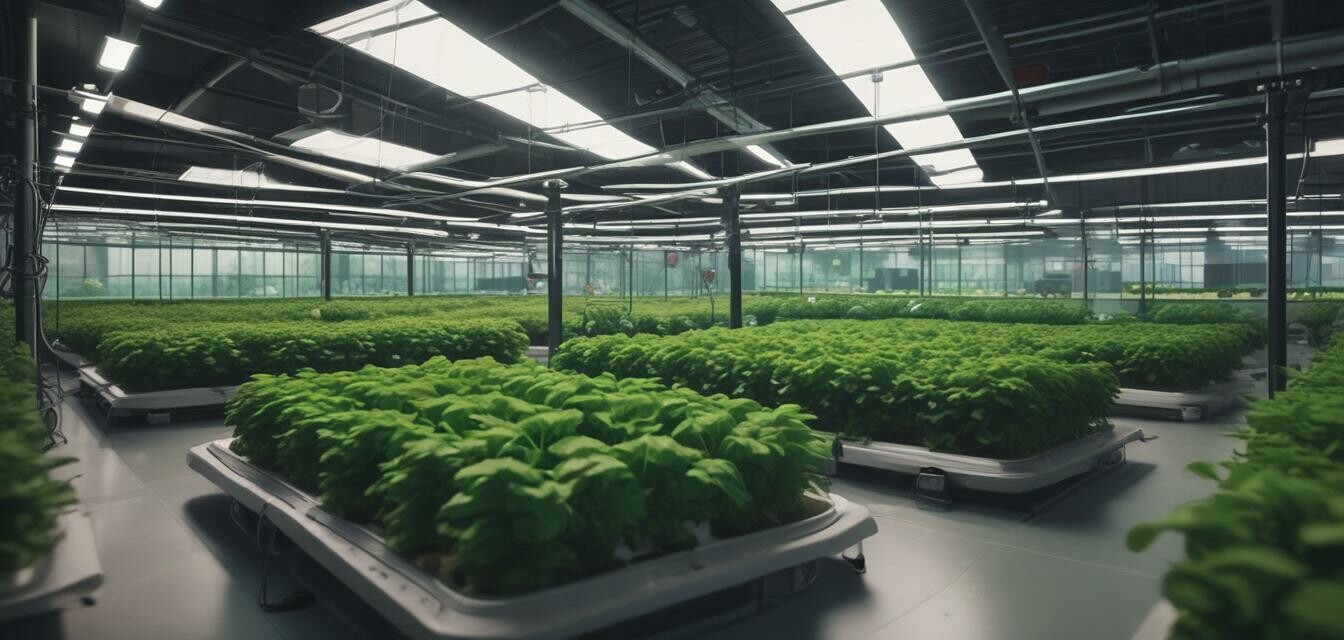
Growing Leafy Greens Hydroponically
Key Takeaways
- Leafy greens such as lettuce, spinach, and kale thrive in hydroponic systems.
- Optimal nutrient balance and lighting are essential for healthy growth.
- Indoor hydroponic setups allow for year-round cultivation of fresh greens.
- Regular maintenance, including pH checks, can prevent nutrient deficiencies.
- Harvesting techniques vary by plant type but should be done with care to encourage regrowth.
Hydroponics is an innovative gardening method that allows gardeners to grow plants without soil, providing a clean and efficient way to produce leafy greens. In this article, we will explore different varieties of leafy greens suitable for hydroponic growth and offer practical tips for caring for and harvesting these vibrant plants.
Why grow leafy greens hydroponically?
Leafy greens such as lettuce, spinach, and kale are great choices for hydroponic gardens due to their quick growth rates and minimal space requirements. Here are a few reasons why you should consider growing them using hydroponic systems:
- Space efficiency - Hydroponic systems can be set up almost anywhere, making it ideal for urban gardeners.
- Faster growth - Without soil competition, leafy greens mature quickly.
- Water conservation - Hydroponics uses less water than traditional gardening methods.
- Pest reduction - Indoor growing limits pest problems, reducing the need for chemical treatments.
Popular leafy greens for hydroponics
There are a variety of leafy greens that flourish in hydroponic systems. Below is a table showcasing some popular options along with their specific growing requirements:
| Leafy Green | Growth Time (Days) | pH Level | Light Requirements |
|---|---|---|---|
| Lettuce | 30-45 | 6.0-7.0 | 12-16 hours/day |
| Spinach | 35-45 | 6.0-7.0 | 10-14 hours/day |
| Kale | 50-75 | 6.0-6.5 | 12-16 hours/day |
| Swiss Chard | 50-60 | 6.0-7.0 | 12-14 hours/day |
| Arugula | 30-40 | 6.0-7.0 | 12-16 hours/day |
Care tips for leafy greens in hydroponics
Successfully growing leafy greens hydroponically requires attention to detail and monitoring. Here are some essential care tips:
- Nutrient Solutions: Use a balanced nutrient solution designed for leafy greens to promote healthy growth.
- Water Quality: Ensure that the pH and EC (electrical conductivity) levels of your water are suitable for leafy greens.
- Lighting: Adequate lighting is crucial. Use LED grow lights that provide a full spectrum for optimal growth.
- Temperature Control: Maintain a temperature range of 65-75°F (18-24°C) for best results.
- Air Circulation: Ensure good air flow to avoid mold and pests.
Harvesting your leafy greens
Harvesting leafy greens from your hydroponic system can be done in two main ways:
- Cut and come again: This method allows you to cut the outer leaves, encouraging new growth from the center.
- Whole plant harvest: For certain crops, you may choose to harvest the entire plant at once, especially if you require the space for new seedlings.
Regardless of the method, always use clean, sharp tools to avoid damaging the plants and ensure a clean cut.
Common challenges and solutions
Like any gardening method, hydroponics presents unique challenges. Here are some common issues you may encounter while growing leafy greens:
| Challenge | Solution |
|---|---|
| Nutrient Deficiencies | Regularly monitor pH levels and adjust your nutrient solution to meet plant needs. |
| Pest Infestation | Use preventative measures such as neem oil or introduce beneficial insects. |
| Algae Growth | Cover nutrient reservoirs to reduce light exposure and regularly clean containers. |
| Low Yields | Review light exposure and nutrient levels regularly to optimize conditions. |
Expanding your hydroponic garden
Once you've mastered the basics of growing leafy greens hydroponically, consider adding various plant types to your garden. Explore more about plant varieties to maximize the potential of your hydroponic system.
Conclusion
Growing leafy greens hydroponically is a rewarding endeavor that can provide fresh produce year-round. By choosing the right varieties, ensuring proper care, and trouble-shooting challenges, you can enjoy healthy and delicious greens right from your home. Hydroponics not only allows for the cultivation of high-quality vegetables but also contributes to sustainability and reduces the carbon footprint of food production!
Tips for beginners
- Start with easy-to-grow greens like lettuce and arugula.
- Keep a garden journal to track your plants' progress and any changes you make.
- Join online communities for support, tips, and troubleshooting assistance.
- Consider investing in automated hydroponic systems for easier management.
Pros
- Fresh produce all year round
- Reduced space requirements
- Faster growth compared to soil gardening
- Lower water usage
Cons
- Initial setup costs can be higher
- Requires attention to nutrient balance
- Pest management still necessary
- Potential learning curve for beginners